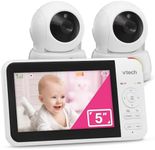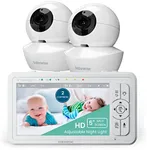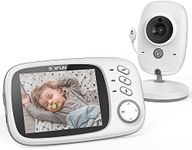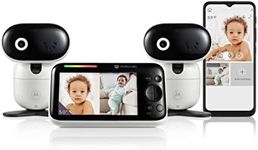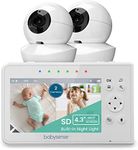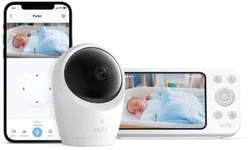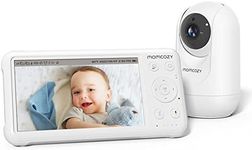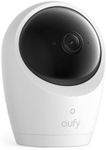Buying Guide for the Best Dual Baby Monitors
Choosing the right dual-baby monitor can make a big difference in how easily you can keep an eye (and ear) on your little ones, especially if you have twins or children in separate rooms. The goal is to find a monitor that gives you peace of mind, is easy to use, and fits your family's unique needs. When shopping, focus on the features that matter most for your situation, such as how many cameras you need, how far the signal reaches, and what kind of alerts or extras you want. Understanding the key specifications will help you make a confident choice.Camera Quantity and Viewing OptionsThis spec refers to how many cameras come with the monitor and how you can view them. For dual-baby monitors, having two cameras is essential if you want to watch two rooms or two angles in the same room. Some monitors let you see both cameras at once (split-screen), while others require you to switch between views. If you need to monitor two children in different places, make sure the system supports at least two cameras and offers a viewing mode that suits your preference. Think about whether you want to see both feeds at the same time or if switching between them is enough for your peace of mind.
RangeRange tells you how far the parent unit can be from the cameras and still work. This is important if you have a large house or want to use the monitor outside, like in the backyard. Ranges can be divided into short (up to 500 feet), medium (500–1000 feet), and long (over 1000 feet). If you live in an apartment or small home, a short range may be fine. For larger homes or if you want to move around freely, look for a monitor with a longer range. Consider your home's size and where you'll use the monitor most often.
Video and Audio QualityThis spec covers how clear the video and sound are. Higher video resolution means a sharper picture, which helps you see details like your baby's breathing or movements. Audio quality matters for hearing cries or other noises. Video quality can range from basic (low resolution) to high definition (HD). If you want to see your babies clearly, especially at night, look for monitors with HD video and good night vision. For audio, make sure the sound is clear and not muffled. Your need for detail and clarity should guide your choice—if you just want to know if your baby is awake, basic quality may be enough, but for more reassurance, go for higher quality.
Battery Life and Power OptionsBattery life refers to how long the parent unit lasts before needing a recharge. Some monitors also let you plug in both the cameras and the parent unit, while others rely on batteries. Battery life can range from a few hours to all day. If you plan to carry the parent unit around the house, longer battery life is helpful. If you mostly keep it plugged in, this may be less important. Think about your daily routine—if you want to move freely without worrying about charging, look for a monitor with a strong battery.
Two-Way TalkTwo-way talk lets you speak to your baby through the monitor, which can be soothing for them and convenient for you. Some monitors only let you listen, while others have a microphone so you can talk back. If you want to comfort your baby without going into the room, or if you want to communicate with another caregiver in the nursery, this feature is valuable. Decide if this is something you’ll use often or if listening only is enough for your needs.
Night VisionNight vision allows you to see your baby clearly in low light or darkness. This is important for overnight monitoring, so you don’t have to turn on lights and disturb your baby. Night vision quality can vary from grainy black-and-white images to clearer, more detailed views. If you want to check on your babies without entering the room at night, look for a monitor with strong night vision capabilities. If you only use the monitor during the day, this may be less critical.
Alerts and NotificationsAlerts can include sound, motion, or temperature notifications. These let you know if your baby is crying, moving, or if the room gets too hot or cold. Some monitors have adjustable sensitivity, so you can set how much movement or noise triggers an alert. If you want to be notified of every little sound, choose a sensitive monitor. If you prefer fewer interruptions, look for one with customizable alerts. Think about how much information you want and how often you want to be notified.
